NETzero – A Performative Facade System Using Upcycled Fishing Nets
2021/22 Digital Matter – Research Studio – Final
Aishwarya Arun, Aishwarya SR, Akshay Madapura, Luca Wenzel
Circular economy encompasses challenging and rethinking the way we use and reuse resources in the building industry, and ultimately eliminate the concept of waste. The aim of NETzero is to analyze the ability and adaptability of nylon nets and arrive at suitable applications for its use as a performative facade system. Harmful ghost fishing nets, discarded at sea, are manipulated with a technique called smocking. This results in a net with more depth and density that has good shading properties.
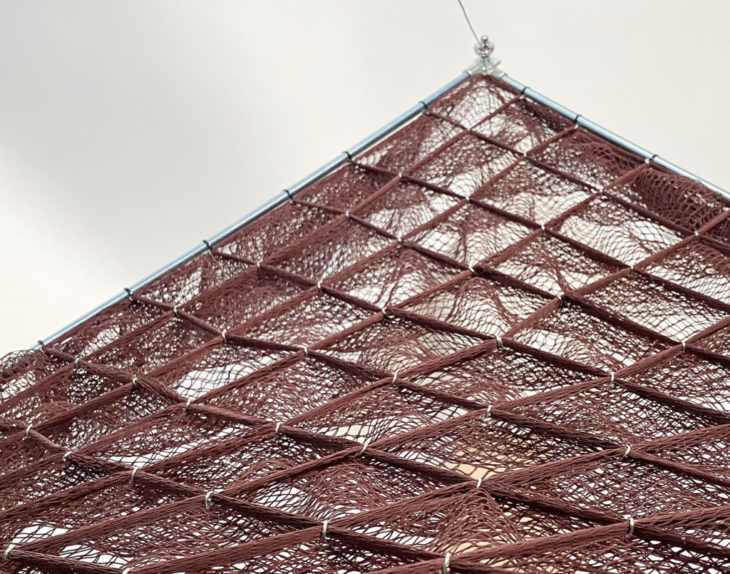
Final Prototype
In the entire process waste reduction is the main goal. The smocking technique is used as a cheap and fast process that requires minimal energy input. Both, an AR-aided manual and a robotic-industrial fabrication method is proposed. The system can be deployed on any existing facade with any geometry. Module sizes can be changed to fit the existing facade grid.
The project also includes a thorough digital exploration. Stretching and smocking behaviors of the nets are digitally simulated to allow for a change in patterns. Net density can then be manipulated to react to different radiation conditions on the facade geometry, while reducing material usage. An evolutionary algorithm is used to optimize the orientation of the modules.
What are Ghost Nets?
Ghost nets are fishing nets that have been abandoned, lost or discarded (ALD), at sea, on beaches or in harbours. They are a major contributor to the bigger problem of ghost gear, which refers to all types of fishing gear, including nets, lines, traps, pots and fish aggregating devices (FADs), that are no longer actively managed by fishers or fisheries.
Each year, ghost gear is responsible for trapping and killing a significant number of marine animals, such as sharks, rays, bony fish, sea turtles, dolphins, whales, crustaceans and sea birds. They can cause further destruction by smothering coral reefs, devastating shorelines, and damaging boats.
definition by olivetidleyproject.org (opened: 24.06.2022)
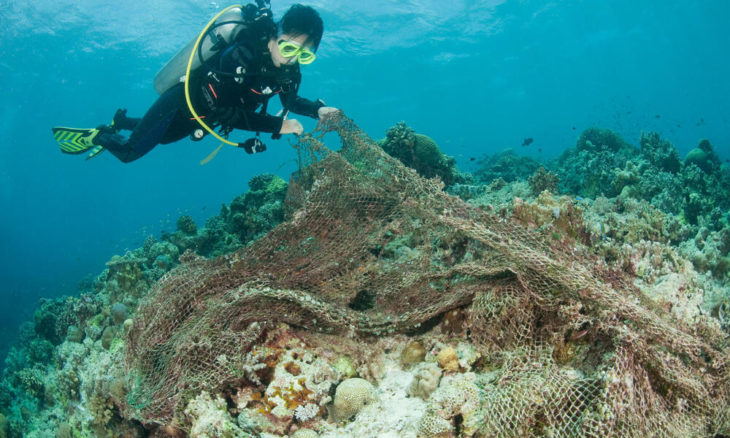
Diver removing ‘lost net’ or ‘ghost net’ trapped in the reef killing the reef underneath in Tubbataha Reef, Sulu Seas, Palawan, Philippines. © Jürgen Freund / WWF
Manual Fabrication with Augmented Reality
Industrial Robotic Fabrication
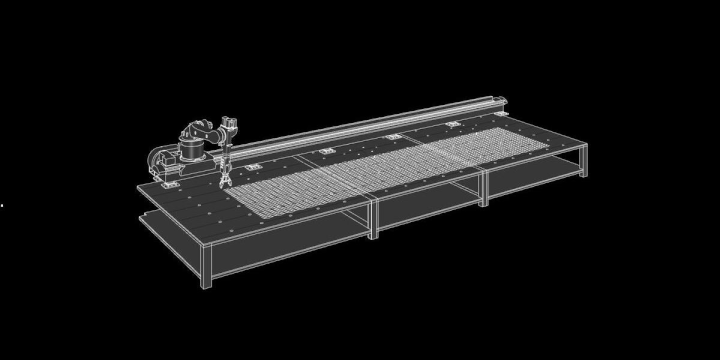
Robotic Fabrication
Module
Each Module consists out of four M10 threaded metal rods. They encompass the smocked fishing net and put it under tension. The threads makes it possible for the net to be attached to the rods with metal wire in a fixed position. The frame’s joints are all moveable and allow two opposing corners to move away from the facade. This causes the net to bend into a minimal surface, creating a three-dimensional geometry without loosing any tension. There are two different joineries. One opposing pair is attached directly to the facade using a hinge. The pair that is distanced from the facade is attached to a metal wire cable that keeps the module in position. By adjusting the lengths of these cables, the module can be oriented towards the most optimal angle to block sun light.
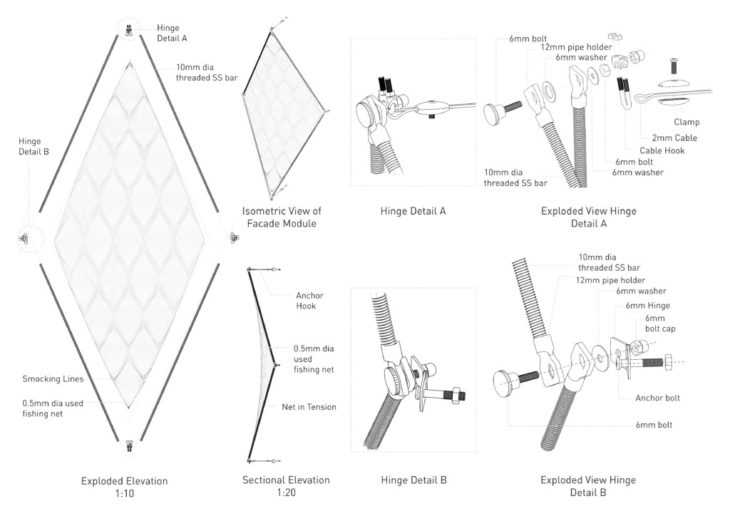
User Interface
A UI makes it possible to adjust the parameters for each module. It can be used to find the base calibration and grid size for the application on the facade. In the example not all parameters can be adjusted. The variation for the density and bending parameter especially have been reduced for simplicity.
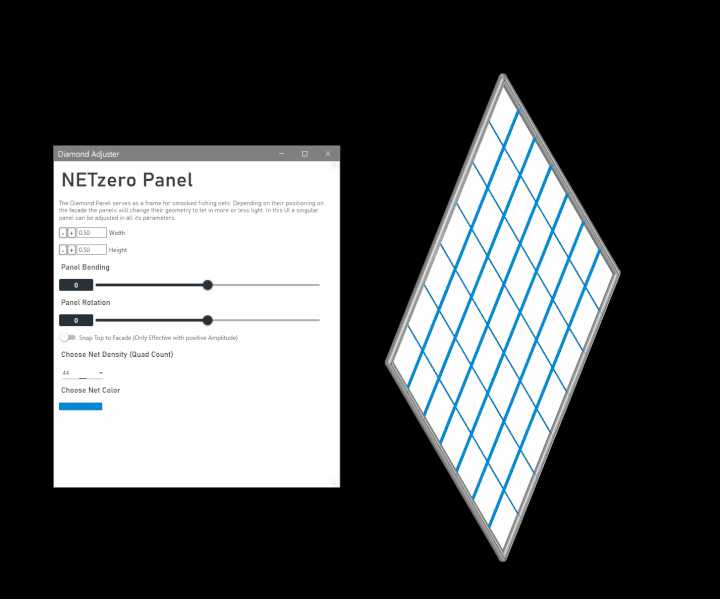
Module User Interface
Facade Panelization
To demonstrate the full adaptive capabilities of the facade system a diverse situation for incident sun radiation has been selected. The building lot is surrounded by high rises that create a changing shadow movement over the year. Furthermore a double curved facade geometry creates a radiation pattern with a wide range of radiation values. The facade is divided into diamond shaped panels and the annual incident radiation is being determined. The radiation values are then remapped to the amount of subdivisions for each panel, resulting in a varied density of the smocking pattern. Areas with higher values get a more dense pattern, to block the radiation better. In order to account for the program of the building, certain areas allow panels to bend outwards. This allows more light to enter on the sides, while the net can still block the radiation, especially direct radiation at steep angles. The gradient creating this opening is achieved with an attractor curve/point. The distance from each panel to the curve/point is measured and the module bends outwards depending on that value.
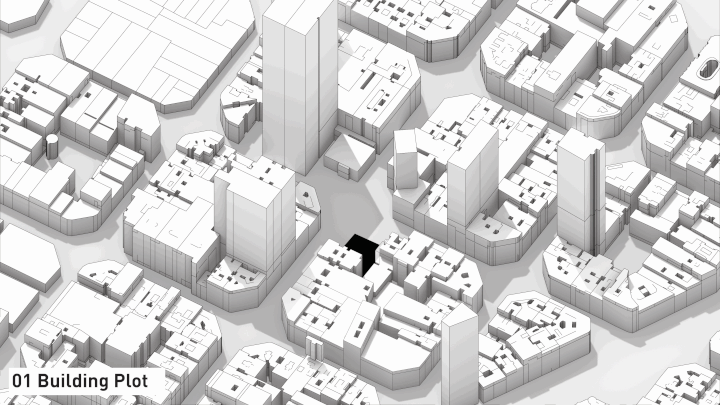
Facade Paneling Process
Facade Optimization
The other main part of the facade optimization is done with the help of the evolutionary solver Wallacei. Each module that received a bending value by the attractor curve/point can rotate on the axis of the two corner points that are directly attached to the facade. The rotation angle is maximized at 80% of the possible rotation angle, in order to avoid collisions. The algorithm searches for the optimal rotation of each individual module, by minimizing the amount of radiation hitting the panel behind the module. The outcome is mainly influenced by the modules global position on the facade, but can also be affected by local factors, such as a specific building shadow that wanders over that module but not the one next to it. The module is then fixed in that optimal position. However it could also be possible to use this rotation for creating a kinetic facade system that adjusts the metal wire cable lengths.
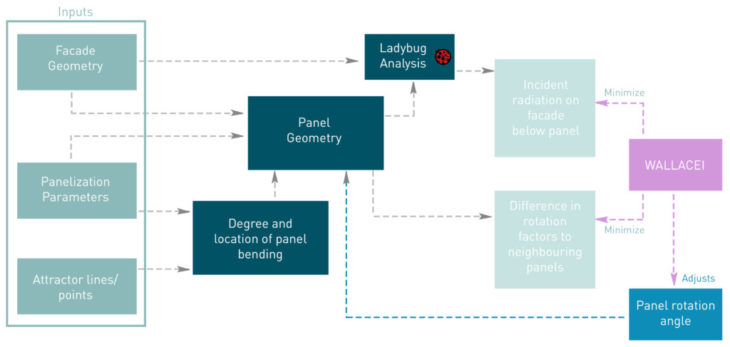
Facade Optimization Scheme
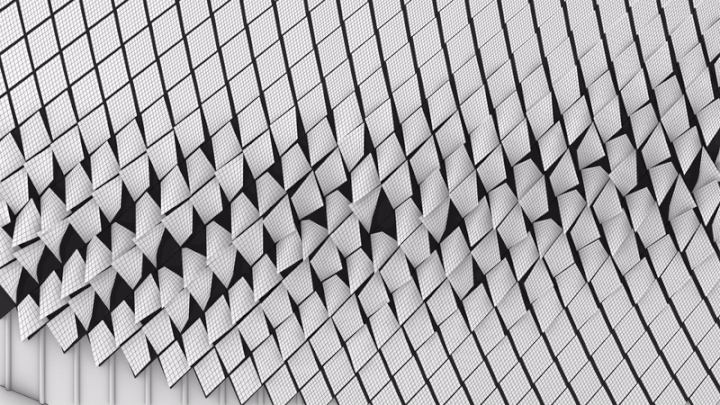
Optimization Animation
Video
Credits
NETzero is a project of IAAC, the Institute for Advanced Architecture of Catalonia, developed during the Master in Advanced Architecture (MAA01) 2021/22 by students: Aishwarya Arun, Akshay Madapura, Aishwarya Shama Sunder Rajendra Prasad, Luca Wenzel; faculty: Areti Markopoulou, David Andrés León; faculty assistant: Nikol Kirova, Eduardo Chamorro Martin; and student assistant: Alexander Dommershausen.
